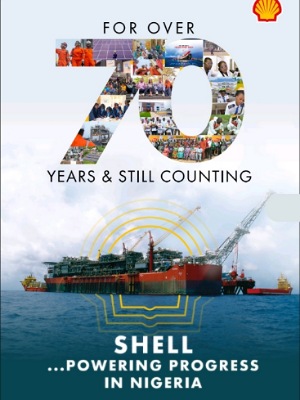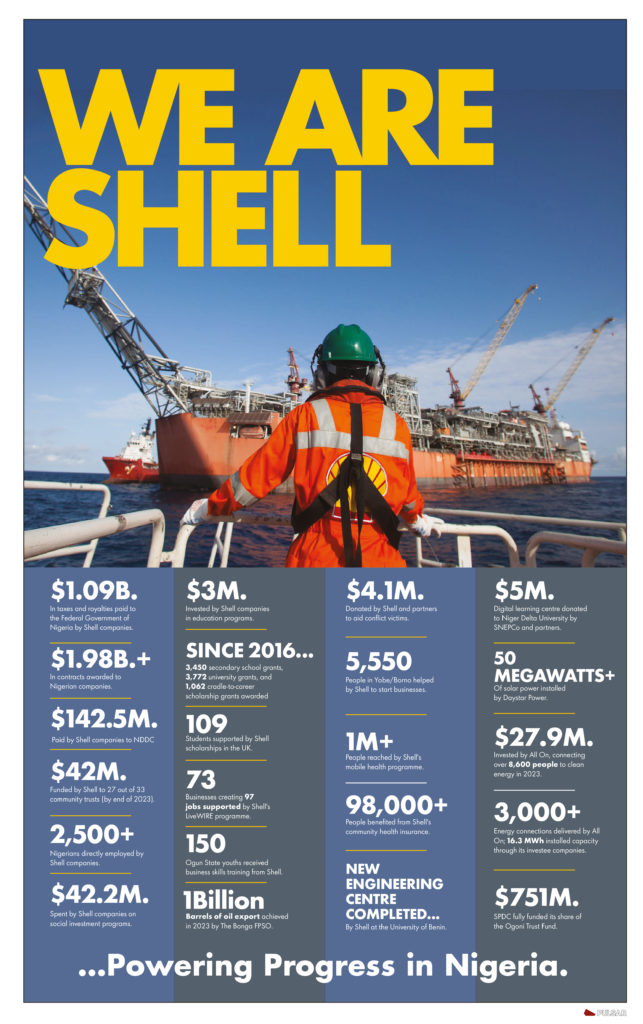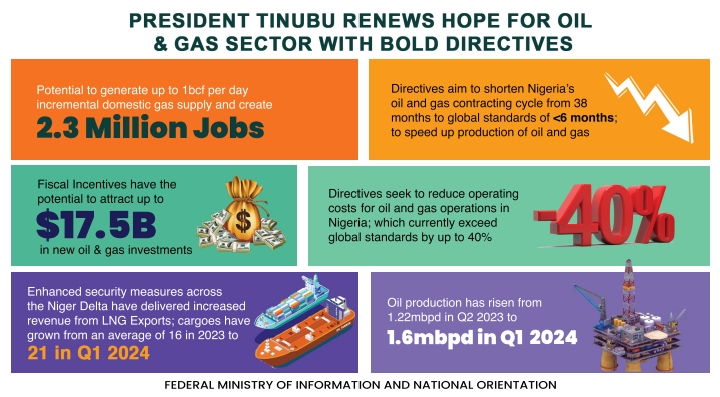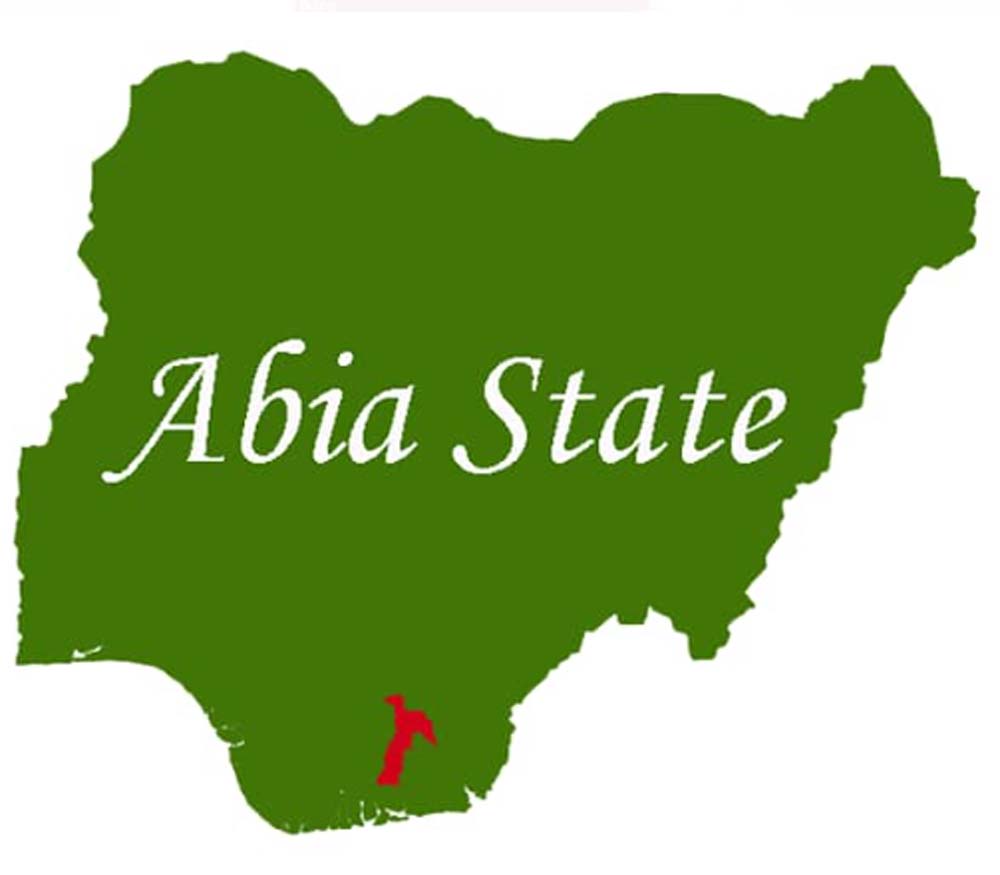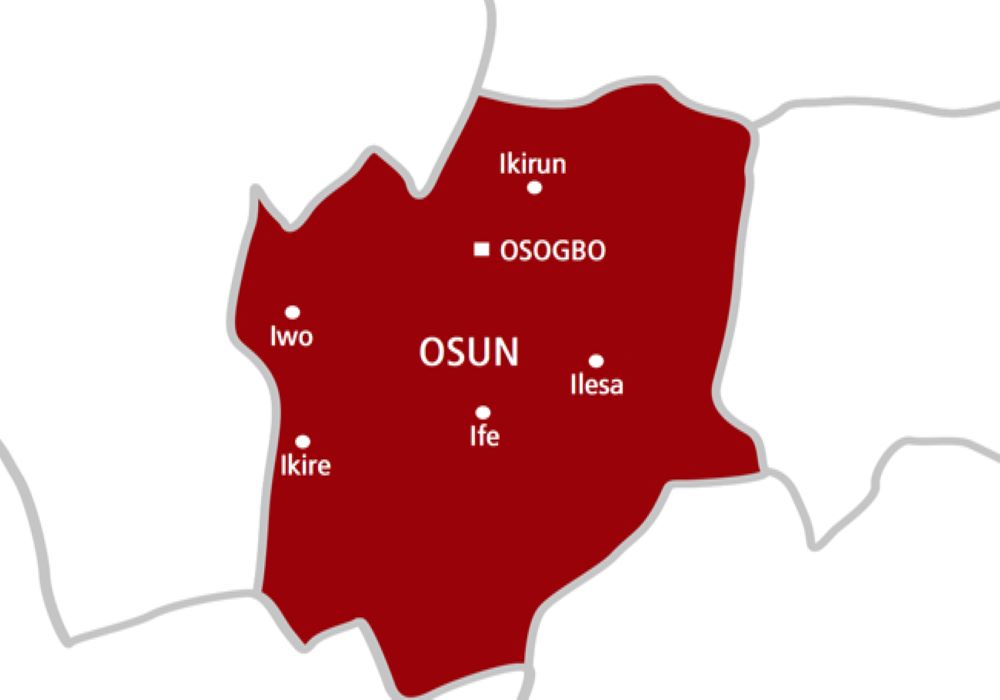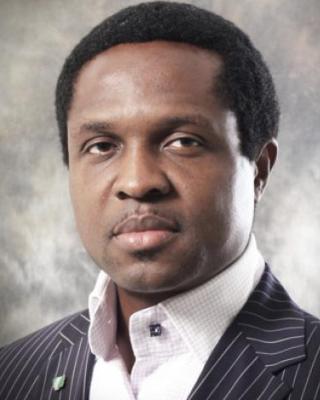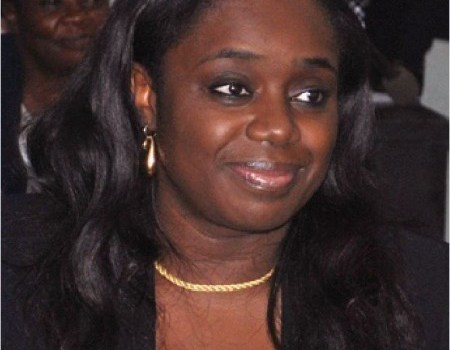Other News
Africa Climate Adaptation Costs Could Soar to USD $350 Billion Annually by 2070
WARSAW – Africa faces huge financial challenges in adapting to climate change, according to a new report by the UN Environment Programme (UNEP) that spells out the costs faced by the continent if governments fail to close the emissions gap to keep warming below 2°C.
Adaptation costs for Africa could reach approximately USD $ 350 billion annually by 2070 should the two-degree target be significantly exceeded, while the cost would be around USD $150 billion lower per year if the target was to be met.
Africa’s Adaptation Gap, released today and endorsed by the African Ministerial Conference on the Environment (AMCEN) whose secretariat is hosted by UNEP, confirms the World Bank’s Turn Down the Heat Reports that there is a 40 per cent chance that we will inhabit a 3.5-4°C World’ if mitigation efforts are not stepped up from current levels.
Africa is already facing adaptation costs in the range of US $7-15 billion per year by 2020.
These costs will rise rapidly after 2020, since higher levels of warming will result in higher impacts.
Combining adaptation costs with residual damages, the total costs can reach 4 per cent of Africa’s Gross Domestic Product (GDP) by 2100, under a 3.5-4°C scenario.
If no adaptation measures are taken, damages are expected to cost 7 per cent of African GDP by 2100 in a 3.5-4°C World’, according to the Africa Gap report.
The report further cautions that, even if the world does manage to get on track to keep warming below 2°C, Africa’s adaptation costs will still hover around USD $35 billion per year by the 2040s and USD $200 billion per year by the 2070s with total costs reaching 1 per cent of the continent’s GDP by 2100.
Missing the 2°C window will not only cost governments billions of dollars but will risk the lives and livelihoods of hundreds of millions of people on the African continent and elsewhere, said UN Under-Secretary General and UNEP Executive Director, Achim Steiner.
Even with a warming scenario of under 2°C by 2050, Africa’s undernourished would increase 25 – 90 per cent. Crop production will be reduced across much of the continent as optimal growing temperatures are exceeded. The capacity of African communities to cope with the impacts of climate change will be significantly challenged.
I would like to welcome the decision by AMCEN to endorse the recommendations of the Africa Gap report; an important step towards strengthening political will and building resilient national policies.
Additional adaptation funding and technical know-how are imperative if Africa is to move towards a climate-resilient green future path. There is for example a need to develop drought-resistant crops, build early warning systems, invest in renewable energy sources and ensure that the catastrophic impacts of climate change are controlled or, better still, avoided ,he added.
UNEP’s Emissions Gap Report – launched days ahead of the UN Climate Conference in Warsaw analyzes in much more detail and confirms that current pledges by individual countries to limit emissions by 2020 would lead to a global temperature increase of about 3.5-4°C warming by 2100 unless emissions are reduced now and substantially reduced afterwards.
Even if nations meet their current climate pledges, greenhouse gas emissions in 2020 are likely to be 8 to 12 gigatonnes of CO2 (GtCO2e) above the level that would provide a likely chance of remaining on the least-cost pathway consistent with holding warming below 2°C.
Africa cannot risk failure of implementing serious adaptation measures, especially with Africa’s predicted population rise of 2 billion by 2050 and the current ecosystem degradation trajectory, said President of AMCEN and Minister of State for the Environment, United Republic of Tanzania, Dr. Terezya L. Huvisa.
Africa Warming
In a 3.5-4°C World’, Africa’s coastline is expected to undergo sea-level rise 10 per cent higher than the rest of the world, with several countries particularly hard hit.
In Guinea-Bissau, Mozambique, and The Gambia, up to 10 per cent of the entire population would risk flooding risks annually by 2100.
Arid areas in Africa, which already represent about half of the continent’s land area, are expected to increase by 4 per cent.
If we enter a 3°C World’, effectively all of the present maize, millet, and sorghum cropping areas across Africa would become unsustainable for current strains.
In a 4°C World’, southern Africa will likely see decreases of up to 30 per cent in rainfall each year.
At the same time, north, west, and southern Africa will also see declines of 50-70 per cent in groundwater recharge, according to the study.
The study further details how agriculture, fisheries and water access among other sectors will be impacted.
The degree to which these sectors will be impacted will depend on whether commitments are kept and whether better adaptation practices can be implemented.
The study points to a high risk of biodiversity loss, as species may be unable to migrate to suitable climates.
Up to 97 per cent of the 5,000 plant species studied could undergo range size reductions or shifts, while up to 40 per cent could experience total range elimination by 2085 in a 2°C World’ scenario.
At the same time, a 3.5-4°C’ scenario projects fish declines in freshwater lakes across places such as Chilwa, Kariba, Malawi, Tanganyika and Victoria, which would jeopardize the source of more than 60 per cent of the protein needs of the surrounding communities.
Perhaps the most drastic example of the effects of climate change in Africa is that coral reefs which are essential support systems for marine fisheries, tourism, and coastal protection against sea-level rise and storm surges are projected to be entirely extinct before we even enter a 4°C World’.
Adaptation Funding: Opportunities and Challenges
How well Africa deals with these climate impacts, now and in the future, will be co-determined by the funding it receives.
Adaptation measures such as early warning systems and coastal zone management to counter sea-level rise offer a possibility of minimizing these impacts, but Africa’s capacity to adapt depends critically on access to funding.
Traceable funding disbursed in Africa for climate change adaptation through bilateral and multilateral channels for the years 2010 and 2011 amounted to USD $743 and $454 million, respectively, although this figure does not fully account for the funding channeled through Development Finance Institutions, for example the World Bank, or national development banks.
To meet the adaptation costs estimated in the report for Africa by the 2020s, funds disbursed annually would need to grow at an average rate of 10-20 per cent a year from 2011 to the 2020s.
There is currently no clear, agreed pathway to provide these resources.
The UN Framework Convention on Climate Change’s developed country Parties have committed to provide funds rising to USD $ 100 billion annually by 2020 through the Green Climate Fund established by the 2010 Cancun Agreements from public and private sources, for both adaptation and mitigation actions in across all developing countries by 2020.
However, rules drawing up the allocation of funding for adaptation have yet to be defined and await negotiation.
At this stage, there is no clear sense of how much of these funds would benefit countries in the African region, nor of the likely allocation between adaptation and mitigation funding.
Until these issues are resolved it is not possible to assign a share of the USD $100 billion annual commitment by 2020 to Africa.
Assuming funding for adaptation efforts in Africa reached adequate levels by 2020 and assuming the world gets on track to limit warming to below 2°C, annual funding for adaptation efforts in Africa still needs to rise a further 7 per cent a year from the 2020s onwards to keep pace with continuing sea-level rise and warming peaking below 2°C after the 2050s.
This is considerably less than the funding challenge if the current mitigation efforts were not increased, and warming reached 3.5-4°C by 2100.
In this case, the scaling up of annual funds would need to be 10 per cent every year after the 2020s.
Challenged Capacity
In all scenarios, the capacity of African communities to cope with the effects of climate change on different economic sectors and human activities is expected to be significantly challenged, and potentially overwhelmed, by the magnitude and rapid onset of climate change impacts.
To reduce the magnitude of the impacts and their repercussions for African livelihoods, adaptation measures at different levels, from households to national and regional levels, are being planned and implemented and need to be further supported and strengthened.
These measures include:
The development of early-warning systems for floods, droughts or fires to help populations anticipate and prepare for the occurrence of extreme events;
Irrigation, improvement in water storage capacity, reforestation to protect surface water systems, sustainable use of groundwater resources, desalinization of seawater, and rainwater catchments and storage to maintain sufficient and reliable access to freshwater for human and agricultural needs;
City infrastructure protection measures such as seawalls, dykes, wave breakers and other elements of coastal zone management, as well as city-level food storage capacity and urban agriculture to enhance food security;
Improving design and drainage technology of sanitation facilities to reduce the risk of water-borne diseases in the aftermath of extreme weather events.
The majority of these and other adaptation measures require an anticipatory and planned approach, as well as large investments. The need for planned capital-intensive adaptation is greater at high than low warming levels.

WARSAW – Africa faces huge financial challenges in adapting to climate change, according to a new report by the UN Environment Programme (UNEP) that spells out the costs faced by the continent if governments fail to close the “emissions gap” to keep warming below 2°C.
Adaptation costs for Africa could reach approximately USD $ 350 billion annually by 2070 should the two-degree target be significantly exceeded, while the cost would be around USD $150 billion lower per year if the target was to be met.
 Africa’s Adaptation Gap, released today and endorsed by the African Ministerial Conference on the Environment (AMCEN) whose secretariat is hosted by UNEP, confirms the World Bank’s Turn Down the Heat Reports that there is a 40 per cent chance that we will inhabit a ‘3.5-4°C World’ if mitigation efforts are not stepped up from current levels.
Africa’s Adaptation Gap, released today and endorsed by the African Ministerial Conference on the Environment (AMCEN) whose secretariat is hosted by UNEP, confirms the World Bank’s Turn Down the Heat Reports that there is a 40 per cent chance that we will inhabit a ‘3.5-4°C World’ if mitigation efforts are not stepped up from current levels.
• Africa is already facing adaptation costs in the range of US $7-15 billion per year by 2020.
•These costs will rise rapidly after 2020, since higher levels of warming will result in higher impacts.
•Combining adaptation costs with “residual” damages, the total costs can reach 4 per cent of Africa’s Gross Domestic Product (GDP) by 2100, under a 3.5-4°C scenario.
•If no adaptation measures are taken, damages are expected to cost 7 per cent of African GDP by 2100 in a ‘3.5-4°C World’, according to the Africa Gap report.
The report further cautions that, even if the world does manage to get on track to keep warming below 2°C, Africa’s adaptation costs will still hover around USD $35 billion per year by the 2040s and USD $200 billion per year by the 2070s —with total costs reaching 1 per cent of the continent’s GDP by 2100.
“Missing the 2°C window will not only cost governments billions of dollars but will risk the lives and livelihoods of hundreds of millions of people on the African continent and elsewhere,” said UN Under-Secretary General and UNEP Executive Director, Achim Steiner.
“Even with a warming scenario of under 2°C by 2050, Africa’s undernourished would increase 25 – 90 per cent. Crop production will be reduced across much of the continent as optimal growing temperatures are exceeded. The capacity of African communities to cope with the impacts of climate change will be significantly challenged.”
“I would like to welcome the decision by AMCEN to endorse the recommendations of the Africa Gap report; an important step towards strengthening political will and building resilient national policies.”
“Additional adaptation funding and technical know-how are imperative if Africa is to move towards a climate-resilient green future path. There is for example a need to develop drought-resistant crops, build early warning systems, invest in renewable energy sources and ensure that the catastrophic impacts of climate change are controlled or, better still, avoided ,” he added.
UNEP’s Emissions Gap Report – launched days ahead of the UN Climate Conference in Warsaw – analyzes in much more detail and confirms that current pledges by individual countries to limit emissions by 2020 would lead to a global temperature increase of about 3.5-4°C warming by 2100 – unless emissions are reduced now and substantially reduced afterwards.
Even if nations meet their current climate pledges, greenhouse gas emissions in 2020 are likely to be 8 to 12 gigatonnes of CO2 (GtCO2e) above the level that would provide a likely chance of remaining on the least-cost pathway consistent with holding warming below 2°C.
“ Africa cannot risk failure of implementing serious adaptation measures, especially with Africa’s predicted population rise of 2 billion by 2050 and the current ecosystem degradation trajectory,” said President of AMCEN and Minister of State for the Environment, United Republic of Tanzania, Dr. Terezya L. Huvisa.
Africa Warming
In a ‘3.5-4°C World’, Africa’s coastline is expected to undergo sea-level rise 10 per cent higher than the rest of the world, with several countries particularly hard hit.
In Guinea-Bissau, Mozambique, and The Gambia, up to 10 per cent of the entire population would risk flooding risks annually by 2100.
Arid areas in Africa, which already represent about half of the continent’s land area, are expected to increase by 4 per cent.
If we enter a ‘3°C World’, effectively all of the present maize, millet, and sorghum cropping areas across Africa would become unsustainable for current strains.
In a ‘4°C World’, southern Africa will likely see decreases of up to 30 per cent in rainfall each year.
At the same time, north, west, and southern Africa will also see declines of 50-70 per cent in groundwater recharge, according to the study.
The study further details how agriculture, fisheries and water access—among other sectors—will be impacted.
The degree to which these sectors will be impacted will depend on whether commitments are kept and whether better adaptation practices can be implemented.
The study points to a high risk of biodiversity loss, as species may be unable to migrate to suitable climates.
Up to 97 per cent of the 5,000 plant species studied could undergo range size reductions or shifts, while up to 40 per cent could experience total range elimination by 2085 in a ‘2°C World’ scenario.
At the same time, a ‘3.5-4°C’ scenario projects fish declines in freshwater lakes across places such as Chilwa, Kariba, Malawi, Tanganyika and Victoria, which would jeopardize the source of more than 60 per cent of the protein needs of the surrounding communities.
Perhaps the most drastic example of the effects of climate change in Africa is that coral reefs—which are essential support systems for marine fisheries, tourism, and coastal protection against sea-level rise and storm surges—are projected to be entirely extinct before we even enter a ‘4°C World’.
Adaptation Funding: Opportunities and Challenges
How well Africa deals with these climate impacts, now and in the future, will be co-determined by the funding it receives.
Adaptation measures such as early warning systems and coastal zone management to counter sea-level rise offer a possibility of minimizing these impacts, but Africa’s capacity to adapt depends critically on access to funding.
Traceable funding disbursed in Africa for climate change adaptation through bilateral and multilateral channels for the years 2010 and 2011 amounted to USD $743 and $454 million, respectively, although this figure does not fully account for the funding channeled through Development Finance Institutions, for example the World Bank, or national development banks.
To meet the adaptation costs estimated in the report for Africa by the 2020s, funds disbursed annually would need to grow at an average rate of 10-20 per cent a year from 2011 to the 2020s.
There is currently no clear, agreed pathway to provide these resources.
The UN Framework Convention on Climate Change’s developed country Parties have committed to provide funds rising to USD $ 100 billion annually by 2020 through the “Green Climate Fund”—established by the 2010 Cancun Agreements—from public and private sources, for both adaptation and mitigation actions in across all developing countries by 2020.
However, rules drawing up the allocation of funding for adaptation have yet to be defined and await negotiation.
At this stage, there is no clear sense of how much of these funds would benefit countries in the African region, nor of the likely allocation between adaptation and mitigation funding.
Until these issues are resolved it is not possible to assign a share of the USD $100 billion annual commitment by 2020 to Africa.
Assuming funding for adaptation efforts in Africa reached adequate levels by 2020 and assuming the world gets on track to limit warming to below 2°C, annual funding for adaptation efforts in Africa still needs to rise a further 7 per cent a year from the 2020s onwards to keep pace with continuing sea-level rise and warming peaking below 2°C after the 2050s.
This is considerably less than the funding challenge if the current mitigation efforts were not increased, and warming reached 3.5-4°C by 2100.
In this case, the scaling up of annual funds would need to be 10 per cent every year after the 2020s.
Challenged Capacity
In all scenarios, the capacity of African communities to cope with the effects of climate change on different economic sectors and human activities is expected to be significantly challenged, and potentially overwhelmed, by the magnitude and rapid onset of climate change impacts.
To reduce the magnitude of the impacts and their repercussions for African livelihoods, adaptation measures at different levels, from households to national and regional levels, are being planned and implemented and need to be further supported and strengthened.
These measures include:
• The development of early-warning systems for floods, droughts or fires to help populations anticipate and prepare for the occurrence of extreme events;
•Irrigation, improvement in water storage capacity, reforestation to protect surface water systems, sustainable use of groundwater resources, desalinization of seawater, and rainwater catchments and storage to maintain sufficient and reliable access to freshwater for human and agricultural needs;
•City infrastructure protection measures such as seawalls, dykes, wave breakers and other elements of coastal zone management, as well as city-level food storage capacity and urban agriculture to enhance food security;
•Improving design and drainage technology of sanitation facilities to reduce the risk of water-borne diseases in the aftermath of extreme weather events.
The majority of these and other adaptation measures require an anticipatory and planned approach, as well as large investments. The need for planned capital-intensive adaptation is greater at high than low warming levels.
Other News
Nigeria Is Collapsing, Labour Party Must Unite To Rescue It — Peter Obi
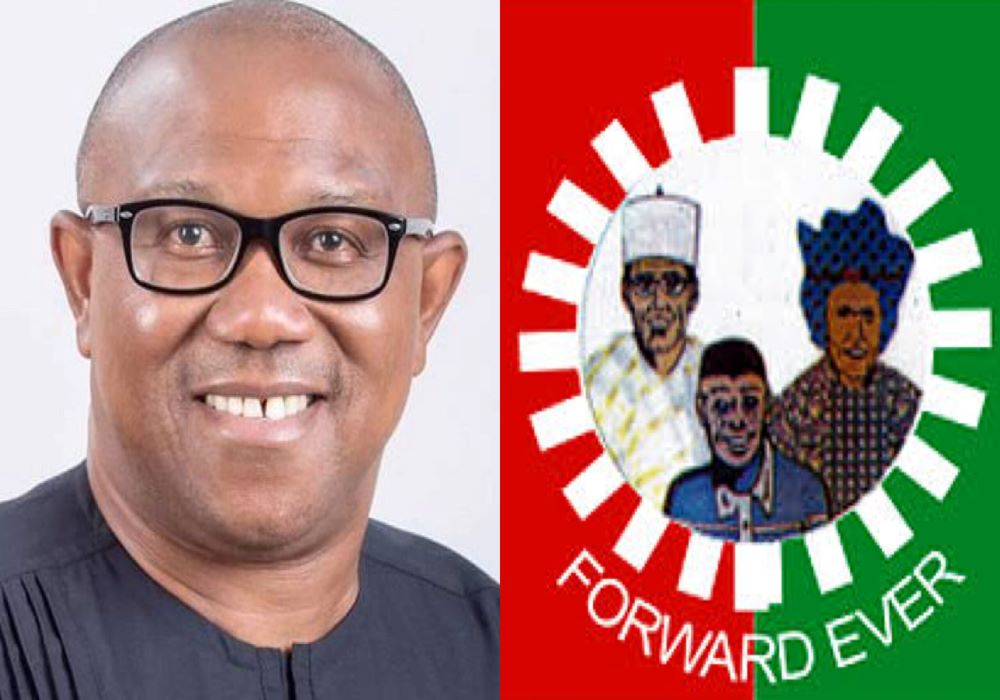
Peter Obi, the Labour Party’s (LP) presidential candidate in the 2023 general election, has urged party members to stand strong and united as Nigeria faces a crisis.
Speaking at the ongoing National Executive Council (NEC) meeting in Abuja, Obi highlighted the urgent need for national rescue, calling attention to the country’s ongoing struggles.
Obi did not mince words about the state of the nation, stressing that Nigeria is heading towards collapse.
READ MORE: Peter Obi In High-Level Meeting With Gov Bala Mohammed
He encouraged party members to speak up, no matter the opposition they may face.
“Do not fear anybody. Those who were afraid yesterday didn’t do any better,” Obi told the gathered party members. “We must speak out when things are going wrong. Nigeria is collapsing. The numbers are clear; the indices are clear—people are getting poorer every day.”
The former governor of Anambra State also stressed the importance of party unity and inclusiveness. He made it clear that the Labour Party’s direction is about collective choice, not individual preferences.
“Labour Party has chosen to be a family, and we must do everything as a family. It’s not about Peter Obi’s choice; it’s everyone’s choice. This family excludes no one. We want to build a party that is fair and just,” he said.
Looking forward, Obi outlined the party’s vision for the upcoming elections, emphasizing the need for preparation and a focus on selecting the most competent candidates for all political offices.
“We want to go into the next election fully prepared, offering Nigerians the best and most competent candidates for the House of Representatives, the Senate, Governorships, and the Presidency,” Obi stated.
He also called for a stricter focus on loyalty and competence from anyone seeking to run under the Labour Party banner. Obi noted that only committed party members with the necessary capabilities should be considered as candidates.
“We want to correct the mistakes we made in the past. Anyone seeking to contest under our party must be a committed member, not just someone passing through. They must be competent,” he said.
Other News
Medical Result Interpretation: A Key to Early Detection
In today’s fast-paced world, where lifestyle diseases and infectious conditions are on the rise, accurate medical result interpretation is more important than ever.
While laboratory tests generate raw data, their true value lies in expert interpretation, which helps detect diseases early, assess health risks, and guide preventive measures.
SYNLAB, a leader in medical diagnostics, is at the forefront of this critical process, ensuring that individuals and healthcare professionals receive precise, actionable insights that enhance disease detection and prevention. Through cutting-edge technology, specialized panels, and expert analysis, SYNLAB Nigeria is not only helping to diagnose illnesses but also shaping a healthier future for Nigerians.
How Medical Diagnostics Helps in Disease Discovery
Many serious health conditions do not show symptoms in their early stages, making medical testing and accurate interpretation essential for early detection. SYNLAB Nigeria offers a wide range of advanced diagnostics that help uncover hidden health conditions before they become critical.
Read Also: On SYNLAB Nigeria’s Secured Patient Portal, Test Result Delivery’s Safe Alternative
1. Early Detection of Chronic and Infectious Diseases
• Diabetes & Cardiovascular Conditions: Blood sugar tests, cholesterol panels, and hypertension screenings help detect conditions before complications arise.
• Cancer Diagnosis: Early screening for prostate cancer (PSA test), breast cancer (mammograms), and cervical cancer (Liquid Based Cytology) significantly improves survival rates.
• Infectious Diseases: Specialized panels, such as the Peachy STI panel, help in the early detection of sexually transmitted infections, ensuring timely treatment and reducing transmission risks.
2. Advanced Molecular and Genetic Testing
Medical science has advanced beyond traditional blood tests, with molecular and genetic diagnostics offering greater accuracy and earlier detection.
• Genetic testing helps individuals understand their risk for hereditary diseases like sickle cell disease, certain cancers, and metabolic disorders.
• Molecular diagnostics detect viral and bacterial infections, such as HPV and tuberculosis, even before symptoms manifest, enabling early treatment and better outcomes.
Preventing Diseases Through Proactive Screening
While detecting diseases is crucial, preventive healthcare plays an even more vital role in reducing the burden of illness. Regular screenings and early interventions can mitigate health risks and promote long-term well-being.
1. Identifying Health Risks Before Symptoms Appear
• Routine Blood Tests: Kidney function, liver enzymes, and other blood markers help detect underlying health conditions early.
• Heart Disease Prevention: Lipid profile tests assess cholesterol levels, guiding patients toward lifestyle changes before cardiovascular complications develop.
2. Personalized Health Insights for Prevention
Medical results are more than just numbers—they offer actionable insights for better health.
• A patient with borderline high blood sugar may be advised on diet and exercise to prevent full-blown diabetes.
• Someone with elevated cholesterol can receive tailored recommendations for heart health before complications arise.
By understanding test results and acting on them, individuals can make informed choices that prevent serious illnesses.
The Role of SYNLAB Nigeria in Medical Result Interpretation
Read Also: Celebrating 20 Years of Excellence: SYNLAB Nigeria’s Journey in Diagnostics Care
SYNLAB Nigeria bridges the gap between medical testing and meaningful healthcare decisions. With a team of in-house pathologists, its expertise in medical result interpretation ensures:
• Accuracy and Reliability: High-quality laboratory processes reduce errors, ensuring that diagnoses are based on trustworthy results.
• Timely Reporting: Quick result delivery prevents delays in treatment and improves patient outcomes.
• Confidential and Secure Data Management: Patients can trust that their medical information is handled with strict privacy protocols.
• Doctor-Patient Collaboration: Beyond delivering test results, SYNLAB provides expert consultation services to help both patients and doctors fully understand their health status.
By prioritizing early detection, prevention, and expert interpretation, SYNLAB Nigeria is transforming medical diagnostics into lifesaving solutions.
Laboratory tests alone are not enough; understanding and acting on those results is what truly saves lives. SYNLAB Nigeria ensures that both medical professionals and patients receive clear, accurate, and meaningful health insights that drive better decision-making.
By offering cutting-edge diagnostics, expert result interpretation, and personalized health recommendations, SYNLAB Nigeria is empowering individuals to take control of their health.
Take charge of your health today—because early detection and prevention begin with understanding your medical results.
About SYNLAB
• SYNLAB Nigeria is a member of the SYNLAB group, with a presence in over 30 countries in four continents. The organization has over 30 active locations across Nigeria and has been ISO 15189 certified since 2006.
• SYNLAB Group is the leader in medical diagnostic services and specialty testing in Europe. The Group offers a full range of innovative and reliable medical diagnostics to patients, practicing doctors, hospitals and clinics, governments, and corporations.
• Providing the leading level of service within the industry, SYNLAB is the partner of choice for routine and specialty diagnostics in human and veterinary medicine. The Group continuously innovates medical diagnostic services for the benefit of patients and customers.
• SYNLAB holds leading positions in most markets, regularly reinforcing the strength of its network through a proven acquisition strategy.
• More information can be found on www.synlab.com, www.synlab.com.ng
Other News
Sowore, Activists Escort NYSC Member To Meeting Over Viral Video Criticizing Tinubu
Human rights activist Omoyele Sowore and several legal practitioners on Monday escorted a Lagos-based National Youth Service Corps (NYSC) member, Ushie Uguamaye, popularly known as Raye, to the office of her Local Government Inspector (LGI) after she was summoned for a viral video criticizing President Bola Tinubu’s administration.
Raye had gained widespread attention after posting a video on her TikTok account, #talktoraye, in which she lamented the country’s worsening economic crisis and blamed President Tinubu for the hardship faced by Nigerians.
She further described the president as a “terrible leader.”
READ ALSO: You Have No Right To Stop Me – Sowore Battles Police, EFCC At Court Entrance
In a subsequent video, Raye claimed that NYSC officials had begun to threaten her following her public outbursts.
She was then summoned to appear at the NYSC office in Eti-Osa, Lagos, for questioning on Monday.
However, Sowore, alongside legal practitioners including Festus Ogun, Yinka Oyesomi, and Justice Ojienoh, accompanied Raye to the NYSC office in a show of solidarity.
According to an update shared by Sowore on his official X handle, the NYSC officials failed to show up for the meeting.
“We arrived at the Eti-Osa LGI offices of the @officialnyscng with youth corper, Ushie Rita Uguamaye, in Lagos. She was scheduled to appear before the LGI today, and we escorted her to their offices with attorneys.
@mrfestusogun, @yinka_oyesomi, and @justiceojienoh, but the LGI official had absconded, failing to show up throughout our stay,” Sowore posted.


